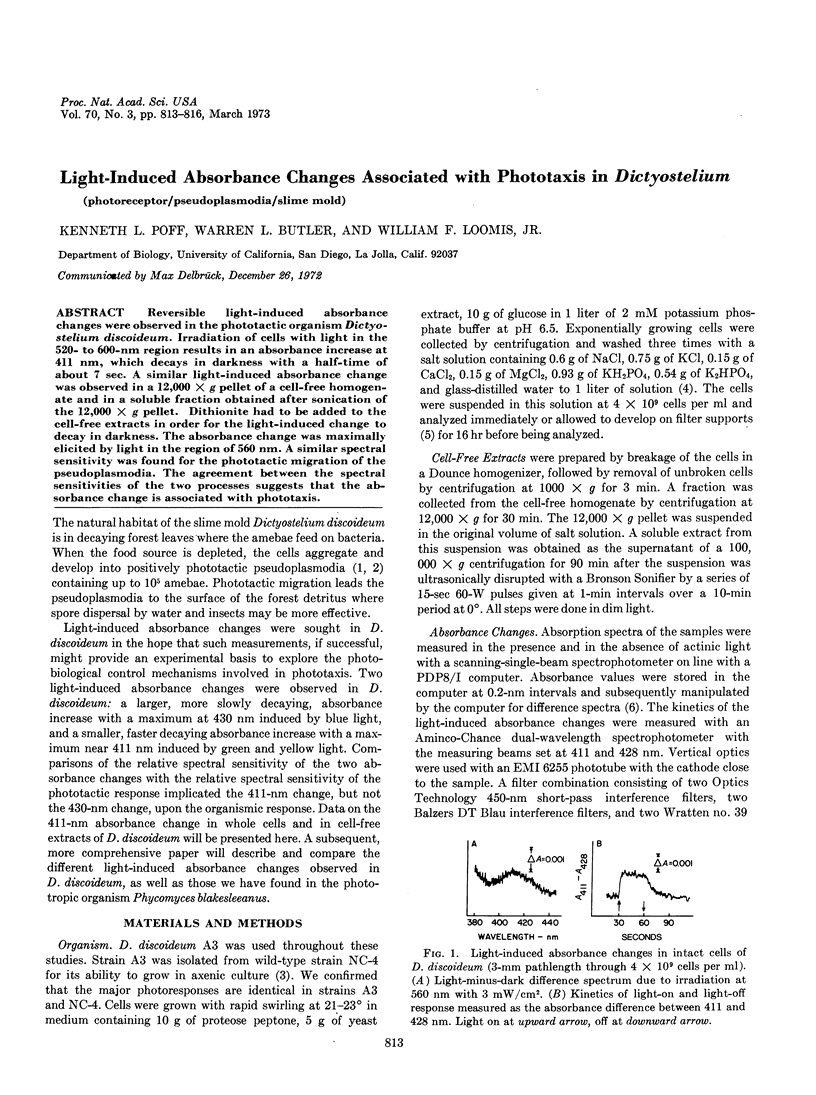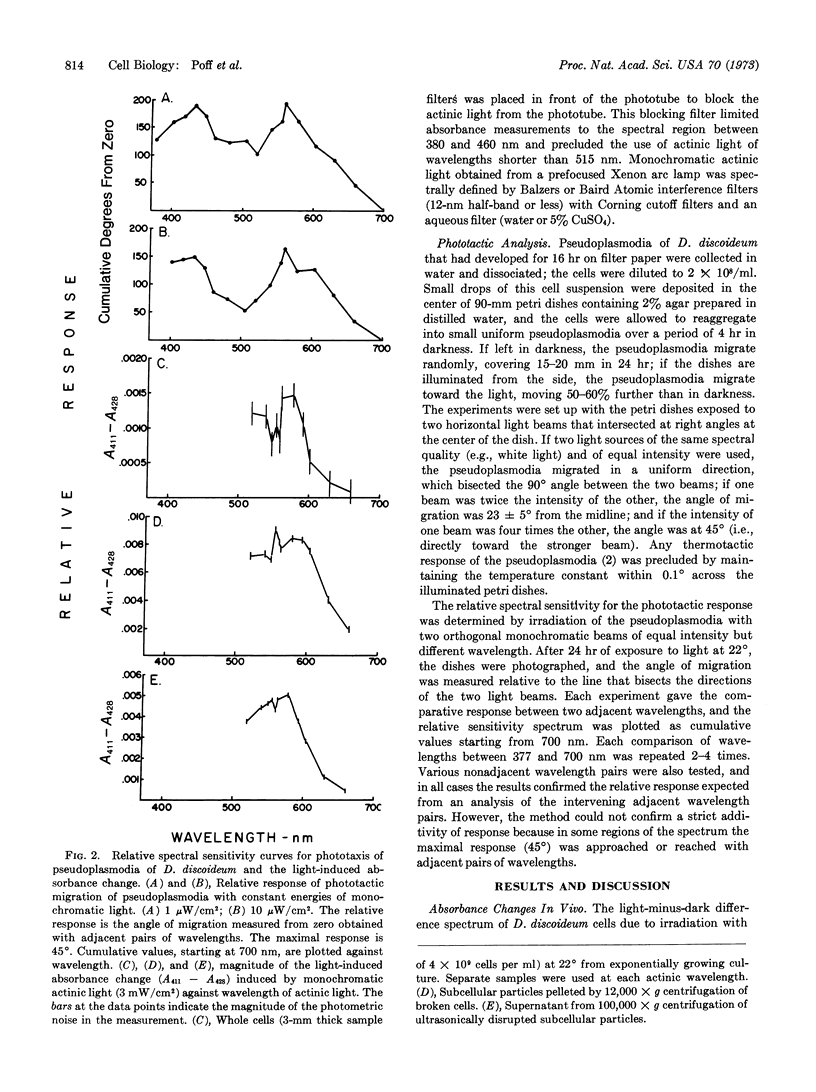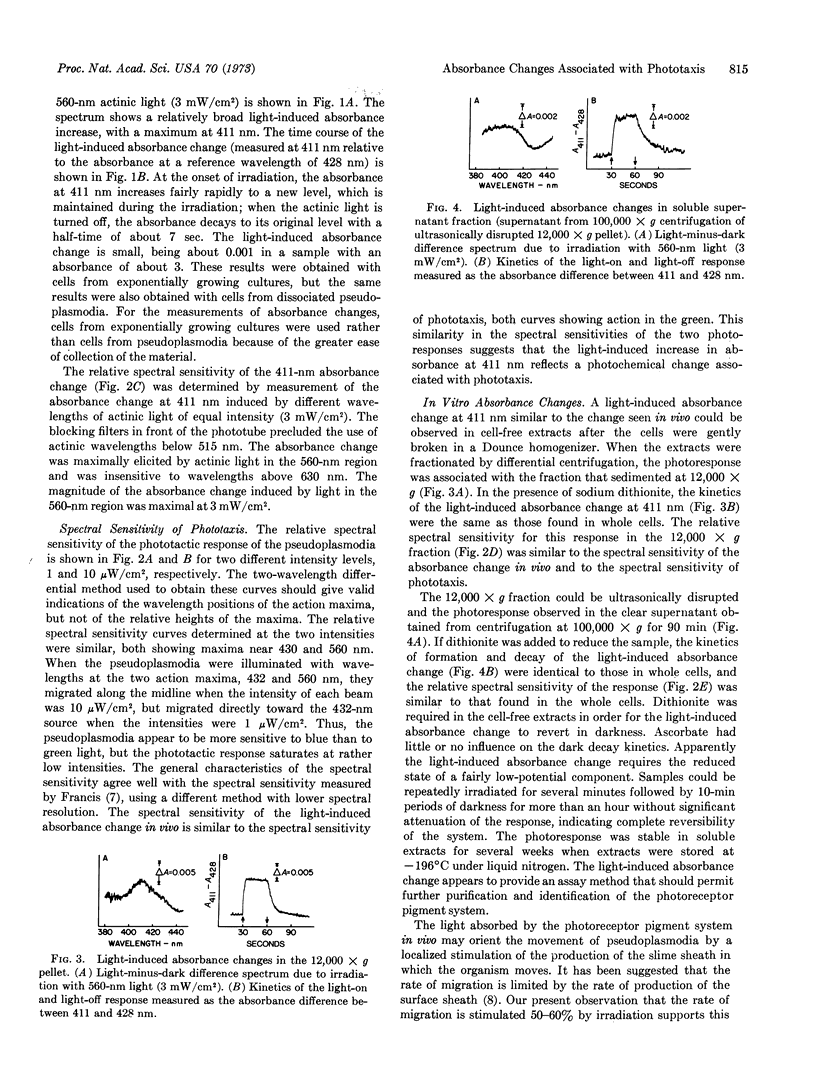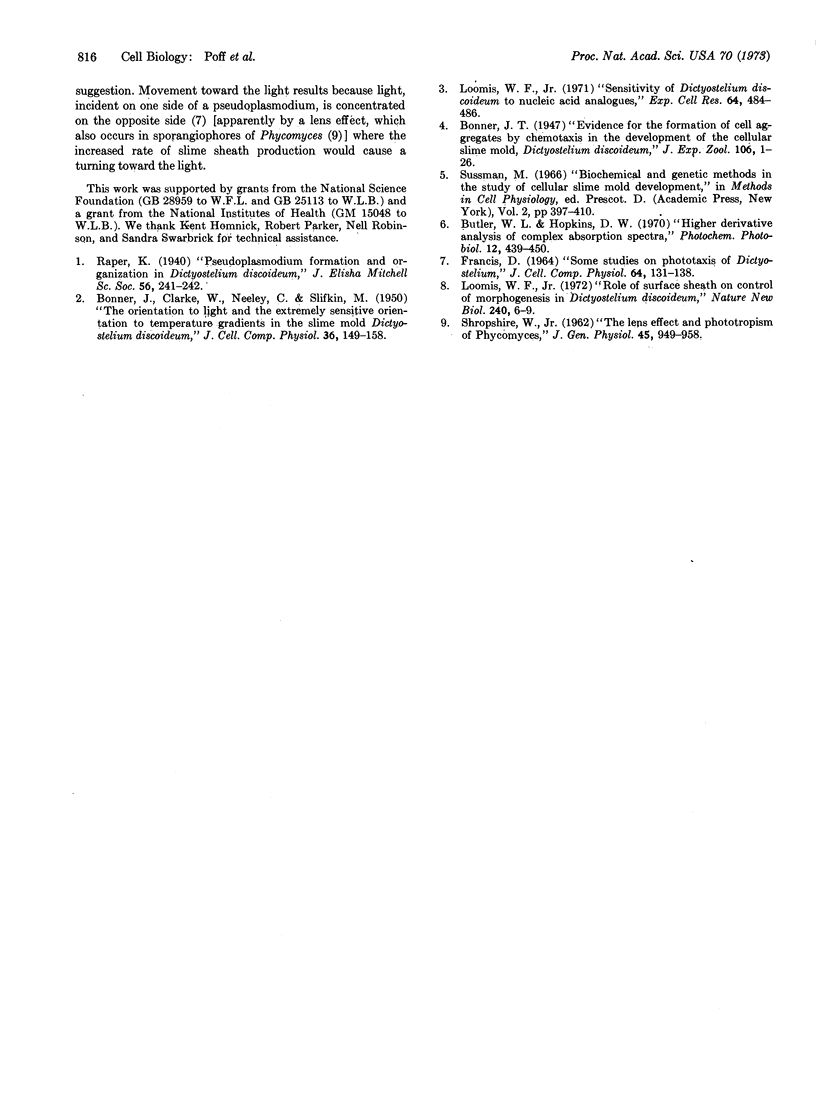Abstract
Reversible light-induced absorbance changes were observed in the phototactic organism Dictyostelium discoideum. Irradiation of cells with light in the 520- to 600-nm region results in an absorbance increase at 411 nm, which decays in darkness with a half-time of about 7 sec. A similar light-induced absorbance change was observed in a 12,000 × g pellet of a cell-free homogenate and in a soluble fraction obtained after sonication of the 12,000 × g pellet. Dithionite had to be added to the cell-free extracts in order for the light-induced change to decay in darkness. The absorbance change was maximally elicited by light in the region of 560 nm. A similar spectral sensitivity was found for the phototactic migration of the pseudoplasmodia. The agreement between the spectral sensitivities of the two processes suggests that the absorbance change is associated with phototaxis.
Keywords: photoreceptor, pseudoplasmodia, slime mold
Full text
PDF



Selected References
These references are in PubMed. This may not be the complete list of references from this article.
- BONNER J. T., CLARKE W. W., Jr, NEELY C. L., Jr, SLIFKIN M. K. The orientation to light and the extremely sensitive orientation to temperature gradients in the slime mold Dictyostelium discoideum. J Cell Physiol. 1950 Oct;36(2):149–158. doi: 10.1002/jcp.1030360203. [DOI] [PubMed] [Google Scholar]
- FRANCIS D. W. SOME STUDIES ON PHOTOTAXIS OF DICTYOSTELIUM. J Cell Physiol. 1964 Aug;64:131–138. doi: 10.1002/jcp.1030640113. [DOI] [PubMed] [Google Scholar]
- Loomis W. F., Jr Role of the surface sheath in the control of morphogenesis in Dictyostelium discoideum. Nat New Biol. 1972 Nov 1;240(96):6–9. doi: 10.1038/newbio240006a0. [DOI] [PubMed] [Google Scholar]
- Loomis W. F., Jr Sensitivity of Dictyostelium discoideum to nucleic acid analogues. Exp Cell Res. 1971 Feb;64(2):484–486. doi: 10.1016/0014-4827(71)90107-8. [DOI] [PubMed] [Google Scholar]


